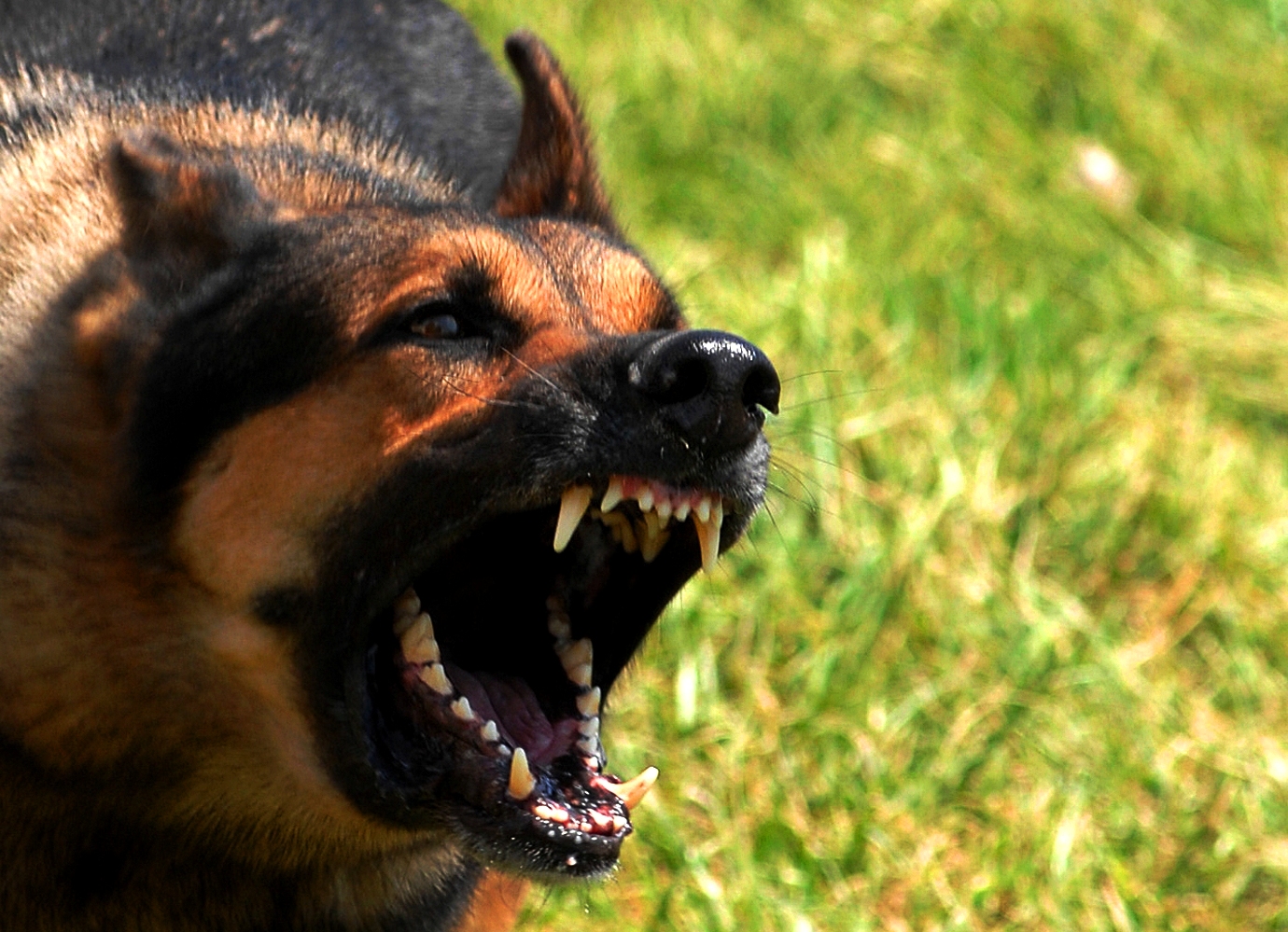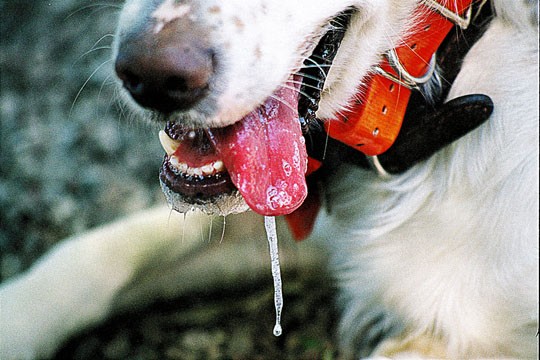The first sign usually is a change in behavior. Pet owners should be aware that behavioral changes can occur as a result of many conditions, from digestive disorders to poisoning.
Rabid animals usually stop eating and drinking, and may appear to want to be left alone. After the initial onset of symptoms, the animal may become vicious or begin to show signs of paralysis. Some rabid animals bite at the slightest provocation and others may be somnolent and difficult to arouse. Once the animal shows signs of paralysis, the disease progresses very quickly and the animal dies.
1. Prodromal Phase: First Symptoms of Rabies
The early symptoms of rabies tend to be subtle, last 2 to 3 days, and include the following:
· Change in tone of the dog's bark
· Chewing at the bite site
· Fever
· Loss of appetite
· Subtle changes in behaviour
 2. Furious Phase: "Mad Dog Syndrome"
2. Furious Phase: "Mad Dog Syndrome" The second phase of infection usually lasts 2 to 4 days and not all rabid animals experience it. Animals that enter immediately into the final paralytic phase are sometimes said to have dumb or paralytic rabies.
Animals that spend most of their diseased state in the furious phase are sometimes said to have furious rabies. An infected dog may viciously attack any moving object, person, or animal; a caged rabid dog will chew the wire, break their teeth, and try to bite a hand moving in front of the cage. Rabid cats will attack suddenly, biting and scratching. Foxes will invade yards and attack dogs, cows, and porcupines.
They may show the following signs:
· Constant growling and barking
· Dilated pupils
· Disorientation
· Erratic behavior
· Episodes of aggression
· Facial expression showing anxiety and hyperalertness
· Irritability
· No fear of natural enemies (e.g., wild animals may not be afraid of people)
· Restlessness
· Roaming
· Seizures
· Trembling and muscle incoordination
· Paralytic Phase
3. The third and final phase of infection usually lasts for 2 to 4 days.
· Appearance of choking
· Dropping of the lower jaw (in dogs)
· Inability to swallow, leading to drooling and foaming of saliva
(i.e., "foaming at the mouth")
· Paralysis of jaw, throat, and chewing muscles
Paralysis then spreads to other parts of the body, the animal becomes depressed, rapidly enters a coma and dies.
